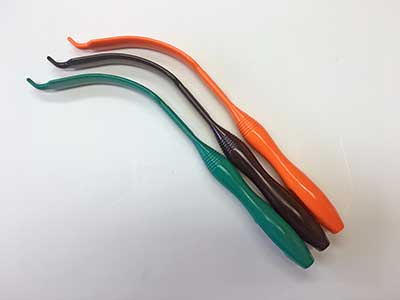Home - Medical Grade Plastics Applications - Medical Polymers in Sterilizable Surgical Instruments
High-performance plastics are ideal options for surgical instrumentation
Surgical instruments must meet extremely rigorous engineering standards, including those of the International Organization for Standardization, or ISO. ISO standards dictate a complete range of quality metrics. Surgeons don’t always have the luxury of reaching for another retractor or clamp should one fail in the middle of a procedure, so these engineering standards are not suggestions, but mandatory for today’s surgical environment. The stringent demands placed on surgical instrumentation are why metal was once the material of choice. Metal was the only material that could provide enough chemical resistance, mechanical strength and resistance to repeated exposure to sterilization methods. Traditional plastics just couldn’t keep up with metal in these areas.High-performance polymers are changing the landscape, as they can now match metal in most areas, and exceed its effectiveness in others. PEEK, PEEK blends and Radel are now comparable or superior alternatives to metal surgical instruments, for these reasons:

1. Built with strength and stiffness
Metal’s stiffness is difficult to match, but the versatile nature of PEEK, PEEK blends and Radel have made them viable contenders in surgical instrumentation. These polymers can be modified in several ways to enhance their physical properties, including the addition of Carbon Fiber. When augmented with Carbon Fiber, PAEK and PEEK instruments can provide excellent stiffness and strength.
2. Compatibility with conventional sanitation methods
PEEK, PEEK blends and Radel offer complete compatibility with standard sterilization approaches, including autoclave (or steam), gamma radiation and EtO sterilization. Even after repeated exposure to these forms of sterilization, these high-performance polymers retain their integrity. Inferior materials would fail under this regular exposure, but components utilizing these advanced polymers are designed to handle these sterilization conditions
3. Wide component design options
High-performance plastics including PEEK, Radel and AvaSpire, can be designed into complex shapes and with integrated parts. These materials are more easily processed than metal, opening up additional design options.
Components using high-performance polymers can be machined from stock shapes, or if high volumes are needed, they can be injection molded as well. Injection molding is particularly useful for single use instruments, as it provides a cost-effective option. There is a growing trend towards single-use instruments and the processing and design flexibility of high-performance polymers make them good alternatives to metal instruments.
5. Lighter than metal instruments
High-performance plastics’ weight advantage over metal is a primary reason for its success across multiple industries. During surgery, lighter instruments make for better ergonomics and allow surgeons to better control the instruments during a procedure. Lighter weight PEEK, Radel and AvaSpire-based instruments help protect medical professionals from repetitive stress injuries and help prevent surgeon fatigue during lengthy surgical procedures.
The reliability of surgical instrumentation is essential. For this reason, medical professionals rightfully demand unwavering quality and dependability from their surgical instruments. High-performance plastics like PEEK, Radel and AvaSpire materials can deliver both, and offer considerable economic and ergonomic benefits in the same package.
